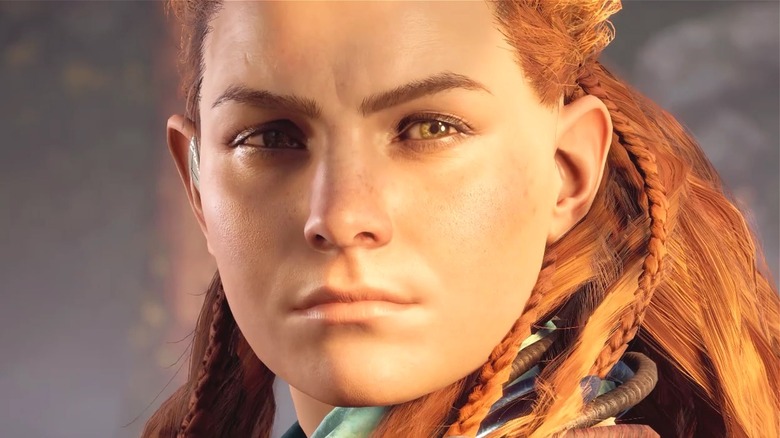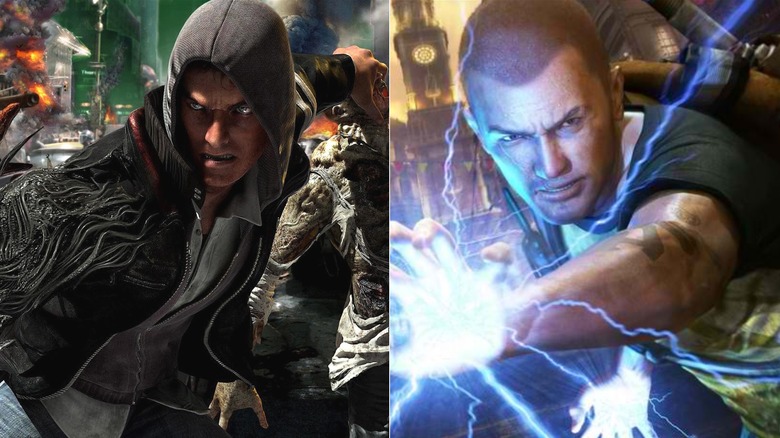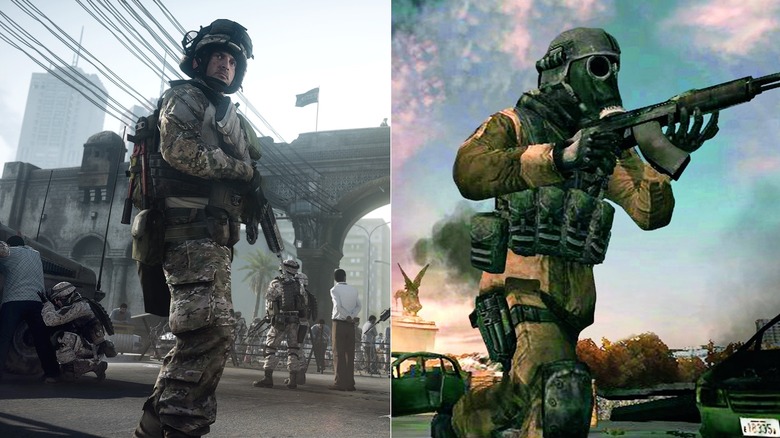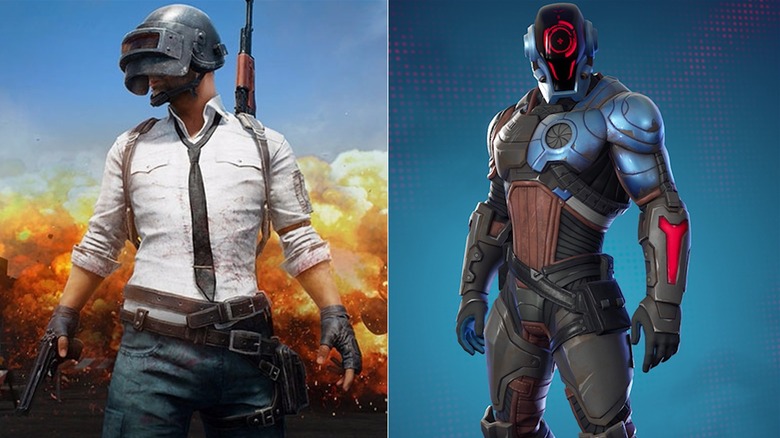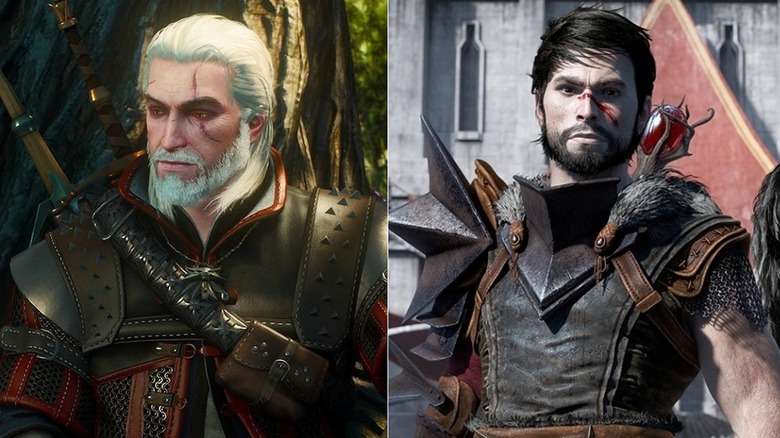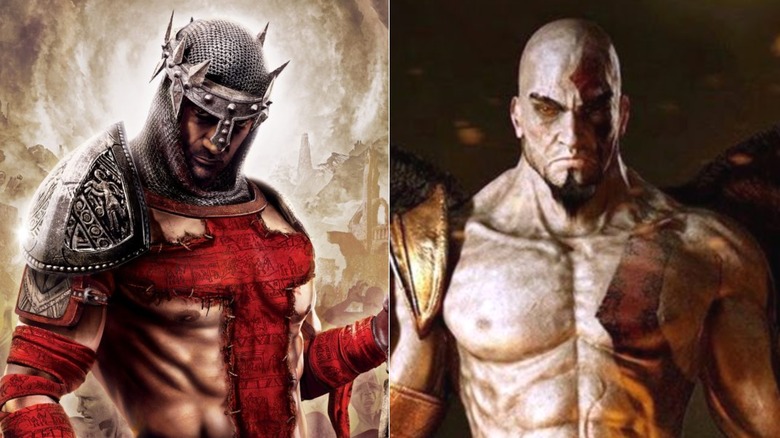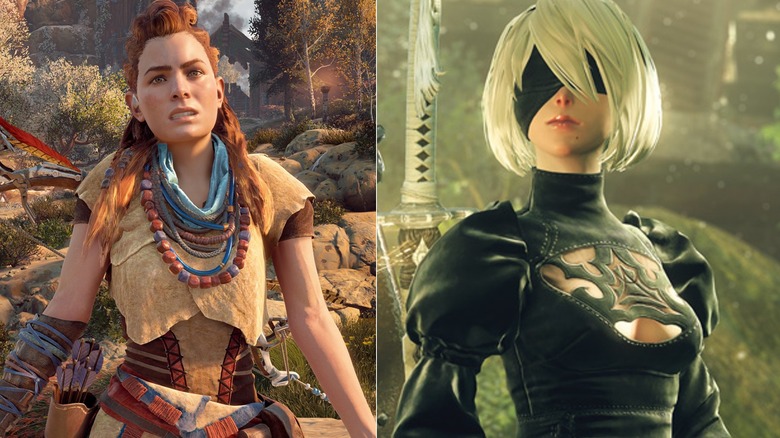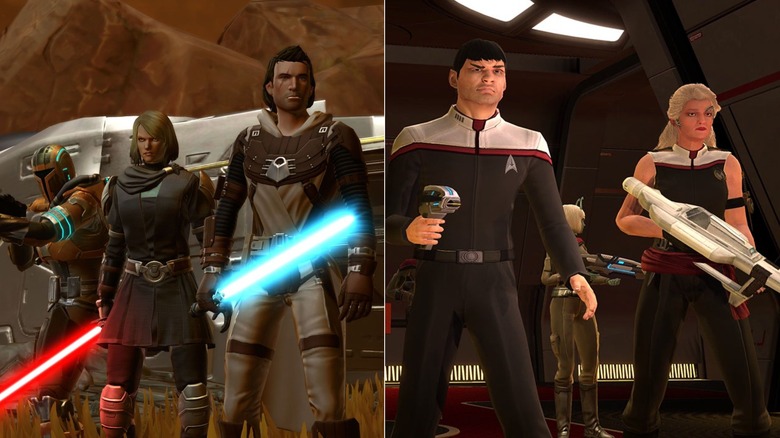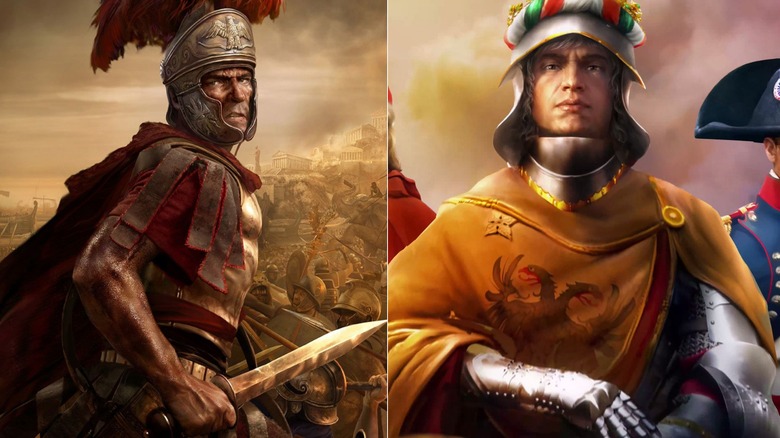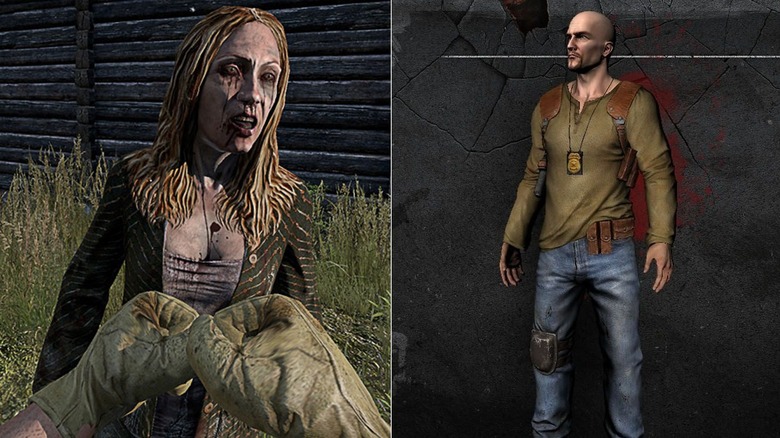Nearly Identical Games That Came Out At The Same Time
Gaming often moves in cycles, genres rise and fall in popularity, seemingly for without reason, and business interests can pack multiple games into certain release windows, like the holiday season. As a result of industry forces like these, or even purely random happenstance, similar games can often come out at nearly the same time as one another.
Sometimes this is due to multiple developers responding to the same trend among audiences, thus starting and finishing their games on similar schedules. Other times it's because corporate executives insist on the most beneficial release date for their own marquee games, regardless of similarities to other things on the market. In these cases, two titles can have the misfortune of competing directly against each other for every ounce of their respective markets' attention.
Of course, getting two great games at once is exciting for gamers, but perhaps not so great for their wallets. The need to choose between one or the other can lead to rivalries between game developers, with ardent supporters of each insisting their favorite is objectively better. However, it is also possible for similar games released in close proximity to benefit from their association with each other, with each driving audiences to one another. With that said, and with both good and bad results in mind, here is a look at some similar games that came out around the same time.
Prototype and inFamous
A pair of story-driven superhero games released within three weeks of each other, "Prototype" and "inFamous" share much in common. "Prototype" takes place in New York City, while "inFamous" takes place in a fictionalized version of New York called Empire City. Both cities are open worlds which encourage the player to explore and take back their territory. The two games also star morally gray protagonists whose powers have unclear origins that they are seeking to unravel. This allows both stories to explore the gray areas of violence and heroism that many games avoid.
Over the course of these campaigns, players are asked to make decisions that will impact the development of the protagonist's powers. "inFamous" has more obvious moral choices to back exploration up, with its ending determined by the choices the player makes throughout the game. "Prototype's" morality is more subtle, and doesn't have quite so many tangible consequences for the story. Instead, it's up to the player how much wanton destruction they cause and how many innocent people get hurt in the quest to discover Alex Mercer's origins.
Both games later spawned successful sequels, with "inFamous" even spawning a couple of spinoffs.
Battlefield 3 and Call of Duty: Modern Warfare 3
It's no secret that EA's "Battlefield" and Activision's "Call of Duty" franchises have long been competitors. Both are the premier multiplayer first-person shooter franchises of two of the biggest video game publishers in the world, and both compete heavily for an audience among console gamers. In 2011, the two competed even more directly than usual when "Battlefield 3" and "Call of Duty: Modern Warfare 3" were released less than two weeks apart, on October 25 and November 8, respectively. Both received solid reviews from critics, though "Battlefield 3" seemed to garner a much better reception among its playerbase.
On top of the similarities between the franchises that already existed, both games take place in the present day, rather than in the past or future as previous installments in both franchises had. In other words, they presented an even greater direct competition with each other than usual. Ultimately, the battle for console FPS superiority continues between "Battlefield" and "Call of Duty" to this day, but it may never be closer than it was in Fall 2011.
PUBG and Fortnite
Two games were at the vanguard of the battle royale craze which swept the gaming world in the previous decade: "PUBG: Battlegrounds" and "Fortnite." They remain two of the most popular and well-known games in the genre to this day, with hits like "Apex: Legends" following in their footsteps. "PUBG" was released in early access on March 23, 2017, while "Fortnite" was released on July 25.
It's worth pointing out that "Fortnite" did not launch with its battle royale mode, but the developers were inspired by the success of "PUBG." In September 2017, developer Donald Mustard explained, "We love Battle Royale games like 'PUBG' and thought 'Fortnite' would make a great foundation for our own version." The developers then quickly put together a working game mode and released it in September to source fan feedback, leading to "Fortnite" growing from a successful-but-niche game to an absolute juggernaut, becoming the favorite game of innumerable popular streamers, a popular esport, and a pop culture sensation.
The Witcher 2: Assassin of Kings and Dragon Age 2
"Dragon Age 2" was released on March 8, 2011, while "The Witcher 2: Assassin of Kings" followed just over two months later on May 17. Both are fantasy RPGs created by two of the industry's leading developers in the genre, BioWare and CD Projekt Red. Both games also feature complex branching fantasy storylines driving their gameplay and narratives. In addition, both were sequels to games that were critically acclaimed and beloved among their fans — and both managed to not only live up to the expectations of the originals, but arguably surpass them.
"Dragon Age 2" and "The Witcher 2" also both feature open worlds which encourage exploration, as well as a variety of side quests that reveal new lore and enrich the series as a whole. Lucky for fans, both would later spawn another pair of sequels, with "Dragon Age: Inquisition" and "The Witcher 3: Wild Hunt" rounding out the trilogies with another respected and well-liked entry in their series.
Dante's Inferno and God of War 3
Sometimes, no matter how similar two games are, they can meet with vastly different receptions among gamers. Released just over a month apart in February and March of 2011, "Dante's Inferno" and "God of War 3" are a pair of action-adventure hack-and-slash games with a basis in historical mythology and religion. That being said, neither game is anything close to an accurate representation of the myths that act as their loose source material.
"God of War 3" was the much better received game among critics and fans and would go on have several equally acclaimed sequels. "Dante's Inferno," meanwhile, did not have nearly as much of a lasting legacy. Its planned sequel, "Purgatorio," was canceled after the first game failed to sell. The follow-up was already well into development, with a script and several gameplay mechanics already having been completed before the cancelation was announced. This left the series consigned, ironically, to development purgatory.
Horizon: Zero Dawn and NieR: Automata
"Horizon Zero Dawn" and "NieR: Automata" are a pair of science-fiction RPGs which both feature aggressive robots of mysterious origin, strong female leads, and a setting in a distant future version of Earth. They were also released less than one month apart in early 2017.
In fact, the two are so similar that "NieR” director Yoko Taro even commented on it. Naming "Horizon" as one of his favorite games of the year, he remarked to Giant Bomb, "Their release date was extremely close to 'NieR:Automata,' it was a sci-fi genre title, an action game, and it featured a female protagonist. So much overlap. I thought, 'Are you trying to kill me? Give me a break, seriously.'"
It should be noted that the two games feature very different combat styles, with "NieR" being more of a hack-and-slash and "Horizon" focusing more on ranged combat. "NieR's" storyline also differs somewhat, as it requires multiple playthroughs to complete, whereas "Horizon" has a more straightforward and linear story. Both games were also critically acclaimed, massively popular among players, and ended up being considered among 2017's best games by many.
Star Wars: The Old Republic and Star Trek Online
While the original release of "Star Trek Online" arrived over a year before "Star Wars: The Old Republic," the free-to-play version was released less than a month later after the latter game. "The Old Republic," as the name implies, takes place thousands of years before the events of the prequel and original "Star Wars" trilogies. Meanwhile, "Star Trek: Online" takes place just a few decades after many of the shows in the "Star Trek" timeline. Still, the two are undoubtedly competitors. Anyone who knows anything about science-fiction, or perhaps even just pop culture in general, knows the "Star Trek" and "Star Wars" franchises are constantly compared to one another. Fans of the two will debate non-stop which is the superior legacy sci-fi universe, and these games offered a new look at both.
As the two major MMORPGs associated with two of the biggest media franchises out there, "Star Trek Online" and "Star Wars: The Old Republic" represent yet another frontier in this eternal competition. While it is nothing but speculation, it would seem logical to think that the free-to-play version "Star Trek: Online" may have been launched as a response to the release of "Star Wars: The Old Republic."
Total War: Rome II and Europa Universalis 4
"Total War: Rome 2" and "Europa Universalis 4" are a pair of grand strategy games, both taking place primarily in Eurasia, with a focus on conquering and colonizing as much of the world as possible. They were released less than a month apart, with "EU4" releasing on August 13, 2013, and "Rome 2" coming out on September 2.
The games do have some meaningful differences, of course. "Rome 2" obviously takes place during the time of the Ancient Rome, and allows the player to seize control of Rome and various other states and lead them through the late BCs and early ADs. "EU4," meanwhile, starts during the beginning of Europe's era of colonization and tasks the player with building out their colonial empire from around the 15th Century onward.
"Rome 2," as is the case with most "Total War" games, has a far more in-depth combat system than its counterpart, allowing the player to control armies precisely in each individual battle. "EU4" only lets you move troops around the map. However, this map is much more expansive than the one in "Rome 2," covering the entire world, whereas "Rome 2" covers only Eurasia and North Africa. Despite these unique factors, the games still share remarkable similarities in setting, economy management, army-building, and scope. Being grand strategy games at their cores, they appeal to largely the same audience.
The War Z and DayZ
Okay, so "The War Z" (later renamed to "Infestation: Survivor Stories") and the standalone retail version of "DayZ" didn't actually end up coming out in close proximity, but they were originally supposed to. The public alpha for "The War Z" launched in October 2012, and "DayZ" was meant to launch a month later. Both fit neatly into the sub-genre of zombie survival games that were seemingly everywhere around 2012, with "DayZ" arguably kicking off the trend as a hugely popular zombie-filled "Arma 2" mod.
However, the launch of "The War Z" launch was a critical disaster, thanks to missing features and a misleading Steam Store description, which led to Steam taking the game off its platform. It also could have killed "DayZ." Lead dev Dean Hall said on Reddit, "I've been pretty depressed about the whole situation. From a personal standpoint, this whole 'saga' of the development made me seriously question if I wanted to be involved in the industry, and I gave serious thought to cutting my losses and not being involved in the project."
After this, the team behind "DayZ" reconsidered the game's release window. The "DayZ" alpha would eventually launch in December 2013, but it wouldn't see a full release until 5 years later, following a lengthy period of testing.

